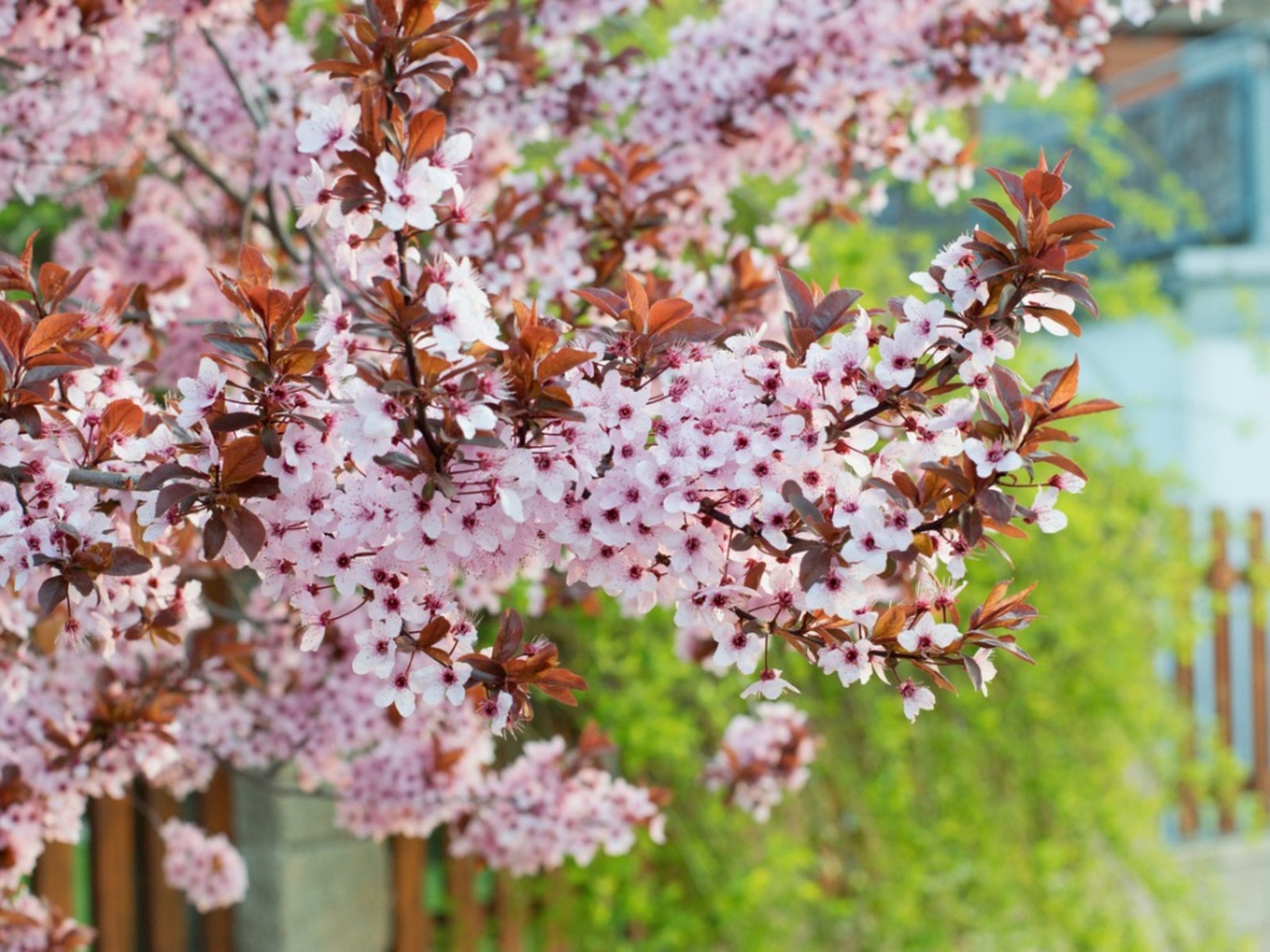Purple Leaf Plum Care – How To Grow A Purple Leaf Plum Tree


Purple leaf plum trees are delightful additions to your home orchard. This little tree, also known as cherry plum, offers blossoms and fruit in cool to moderate climates. What is a purple leaf plum tree? If you want more information on these trees and tips on how to grow a purple leaf plum, read on.
What is a Purple Leaf Plum?
Purple leaf plum trees (Prunus cerasifera) are small deciduous trees. Their habit is either erect or spreading. The slender branches fill with fragrant, showy flowers in springtime. The pale pink flowers develop into purple drupes in summer. These fruits are appreciated by wild birds and are also edible for humans. The bark is quite ornamental as well. It is dark brown and fissured.
How to Grow Purple Leaf Plum Trees
Purple leaf plums fit nicely into many backyards. They only grow 15 to 25 feet (5-8 m.) high and 15 to 20 feet (4-6 m.) wide. If you want to start growing purple leaf plum trees, you’ll need some basic information. The first step is to check your hardiness zone. Purple leaf plum trees thrive in USDA plant hardiness zones 5 through 8. You’ll want to select a planting site that gets full sun and is easiest in well-draining soil. Be sure that the soil is acidic rather than alkaline.
Purple Leaf Plum Care
Purple leaf plum care won’t take much of your time as a gardener. These trees require regular irrigation, particularly during the season after planting. Even when they are mature, though, they prefer moist soil. When you are growing purple leaf plum trees, you may find them attacked by various insect pests. They are susceptible to:
Seek treatment at your local garden store. Even if you offer the best care to your trees, they will prove short lived. Purple leaf plum trees rarely have a lifespan longer than 20 years. You can select from a number of cultivars if you are seeking a particular effect.
- 'Atropurpurea' was developed in 1880, offering reddish purple foliage and light pink blooms.
- 'Thundercloud' is the most popular cultivar and has been used excessively in many landscapes. It is relatively small, with deep purple leaves and blossoms that appear before the leaves.
- For a slightly taller tree, try 'Krauter Vesuvius.' Its habit is distinctly upright.
- 'Newport' is the most cold-hardy selection. It forms a small, rounded tree with early blossoms.
Gardening tips, videos, info and more delivered right to your inbox!
Sign up for the Gardening Know How newsletter today and receive a free copy of our e-book "How to Grow Delicious Tomatoes".

Teo Spengler is a master gardener and a docent at the San Francisco Botanical Garden, where she hosts public tours. She has studied horticulture and written about nature, trees, plants, and gardening for more than two decades. Her extended family includes some 30 houseplants and hundreds of outdoor plants, including 250 trees, which are her main passion. Spengler currently splits her life between San Francisco and the French Basque Country, though she was raised in Alaska, giving her experience of gardening in a range of climates.
-
 Try The Trend – Turn Any Bed Into A Keyhole Garden With This Clever In-Ground Composter
Try The Trend – Turn Any Bed Into A Keyhole Garden With This Clever In-Ground ComposterKeyhole gardening is an efficient and sustainable practice that saves space. Get started on this DIY project quickly and easily with an in-ground composter.
By Bonnie L. Grant
-
 4 Superfast Composting Methods: Turn Waste Into Garden Gold In 30 Days Or Less
4 Superfast Composting Methods: Turn Waste Into Garden Gold In 30 Days Or LessTry the fastest composting methods to turbocharge your pile and transform kitchen scraps and garden waste into finished compost in just a few weeks.
By Mary Ellen Ellis